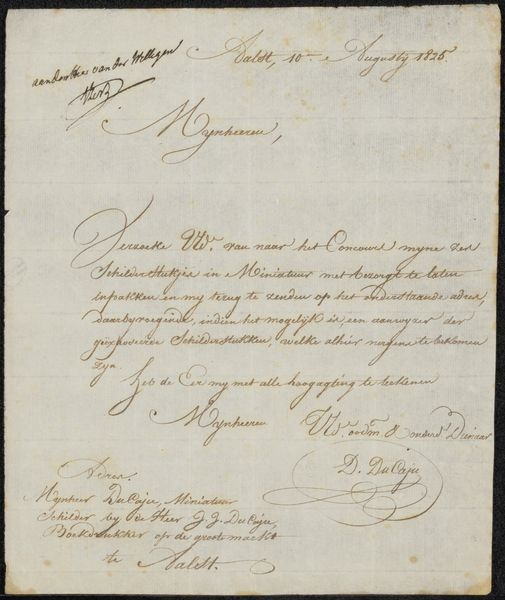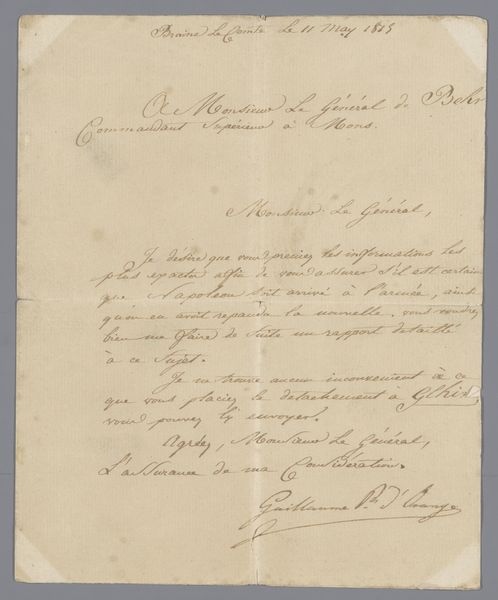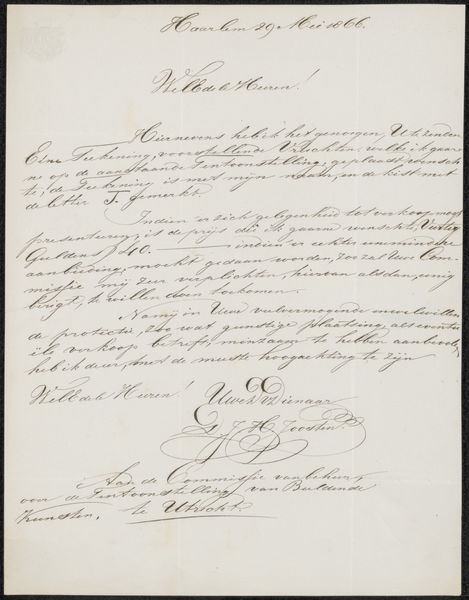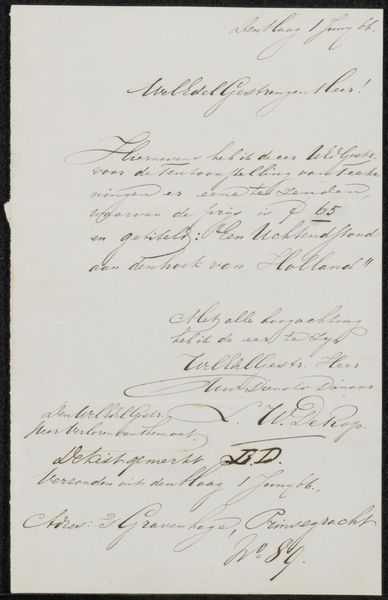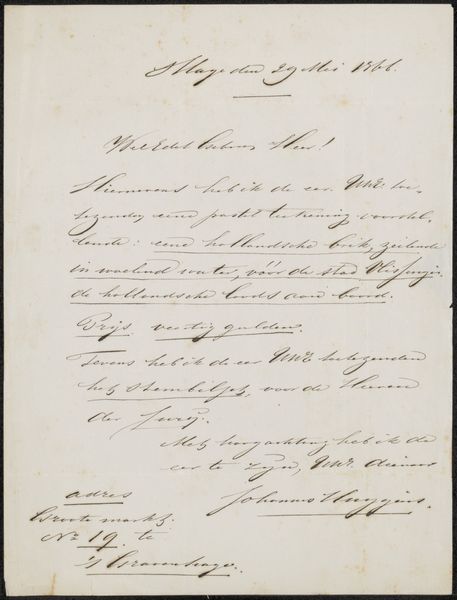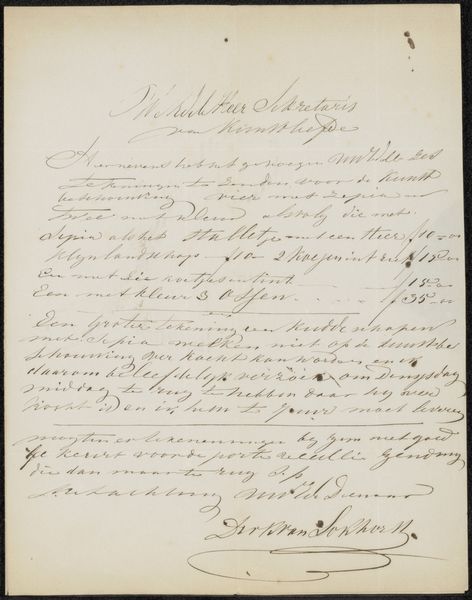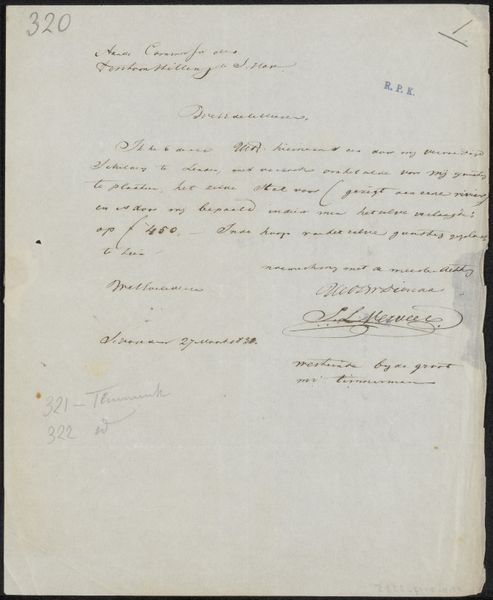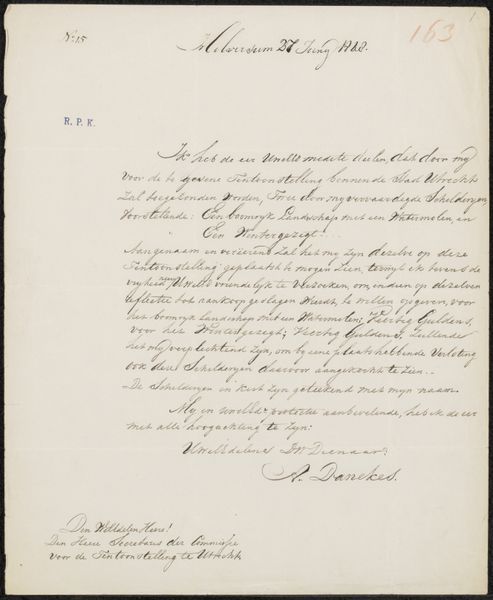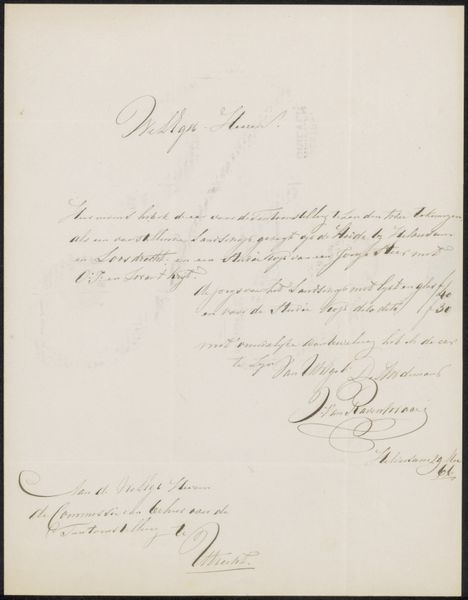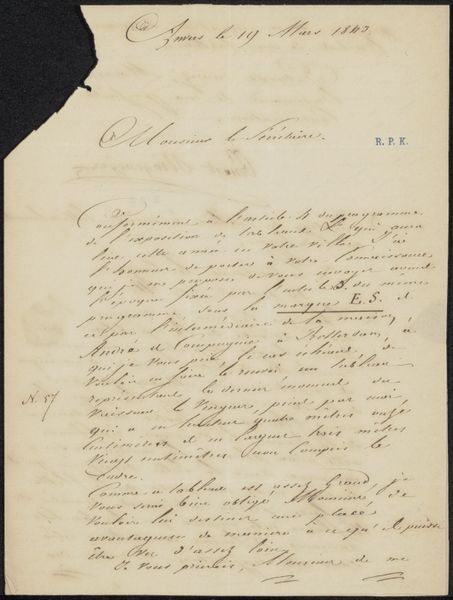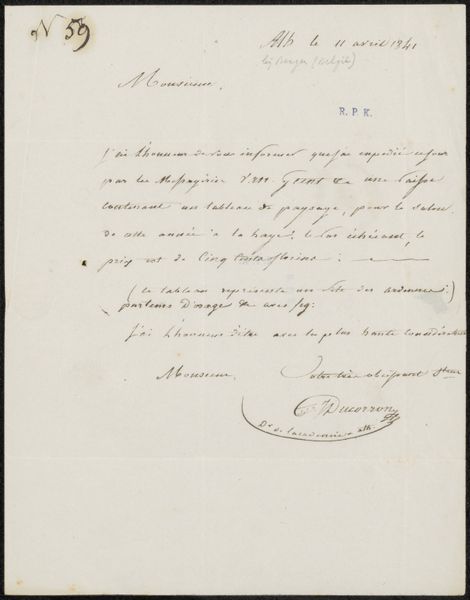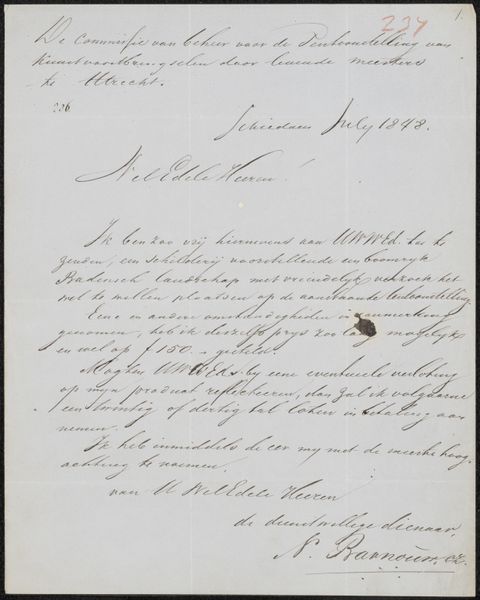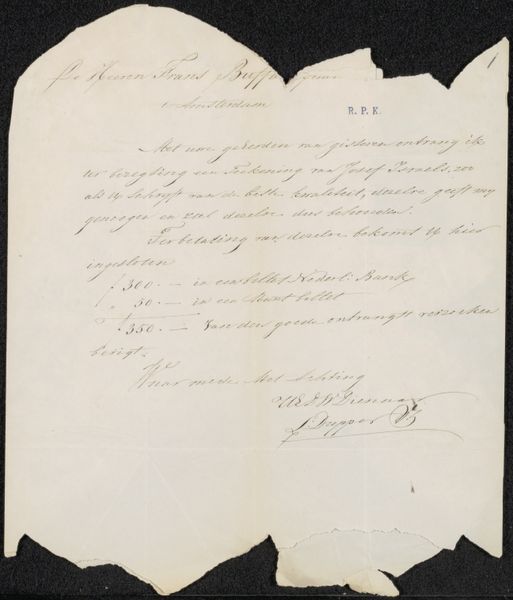
drawing, paper, ink
#
drawing
#
paper
#
ink
Copyright: Rijks Museum: Open Domain
Curator: Today we are looking at a drawing by Henri Leeuw titled "Brief aan anoniem," which translates to "Letter to Anonymous," and is believed to date from around 1867. It is crafted with ink on paper. What are your initial thoughts? Editor: Immediately, I’m drawn to the intimacy. It is a handwritten letter, an artifact from a specific moment of making. I notice the careful pressure of the nib on the paper, forming precise cursive—it speaks of labor and intent. Curator: Absolutely, we should remember the context: 19th-century social dynamics were quite different from our own. Letters were the main form of correspondence. It could reveal social expectations of its sender and possible implications for both. Editor: I’m interested in the actual making of the ink itself—the source of its pigment. Did the writer use a quill or steel nib, and what significance might these various tools have? Considering how easily we communicate today, seeing that kind of physical production speaks to the immense work embedded in ordinary communication. Curator: I am reminded of the formal constraints on communication at that time. Note how Leeuw begins, "Noble Sir," reflecting expected norms of respectful address, and further consider that such missives often played important public and political roles. Editor: It feels immediate yet mediated, due to that careful penmanship. The contrast between the transient nature of writing and the physical resilience of ink and paper intrigues me. The act of committing these words transforms communication into an object to handle and store. Curator: And yet, the fact that the letter is anonymous, to an unknown recipient, obscures Leeuw's personal, private, even potentially secret circumstances. Editor: Right. This artwork reminds me how deeply materials themselves contain, relay, and potentially conceal meaning and communication. Curator: I agree. It urges me to recognize the social and historic norms within that moment. Editor: Yes. The materials, penmanship, and language of social conventions all shape that very exchange.
Comments
No comments
Be the first to comment and join the conversation on the ultimate creative platform.
